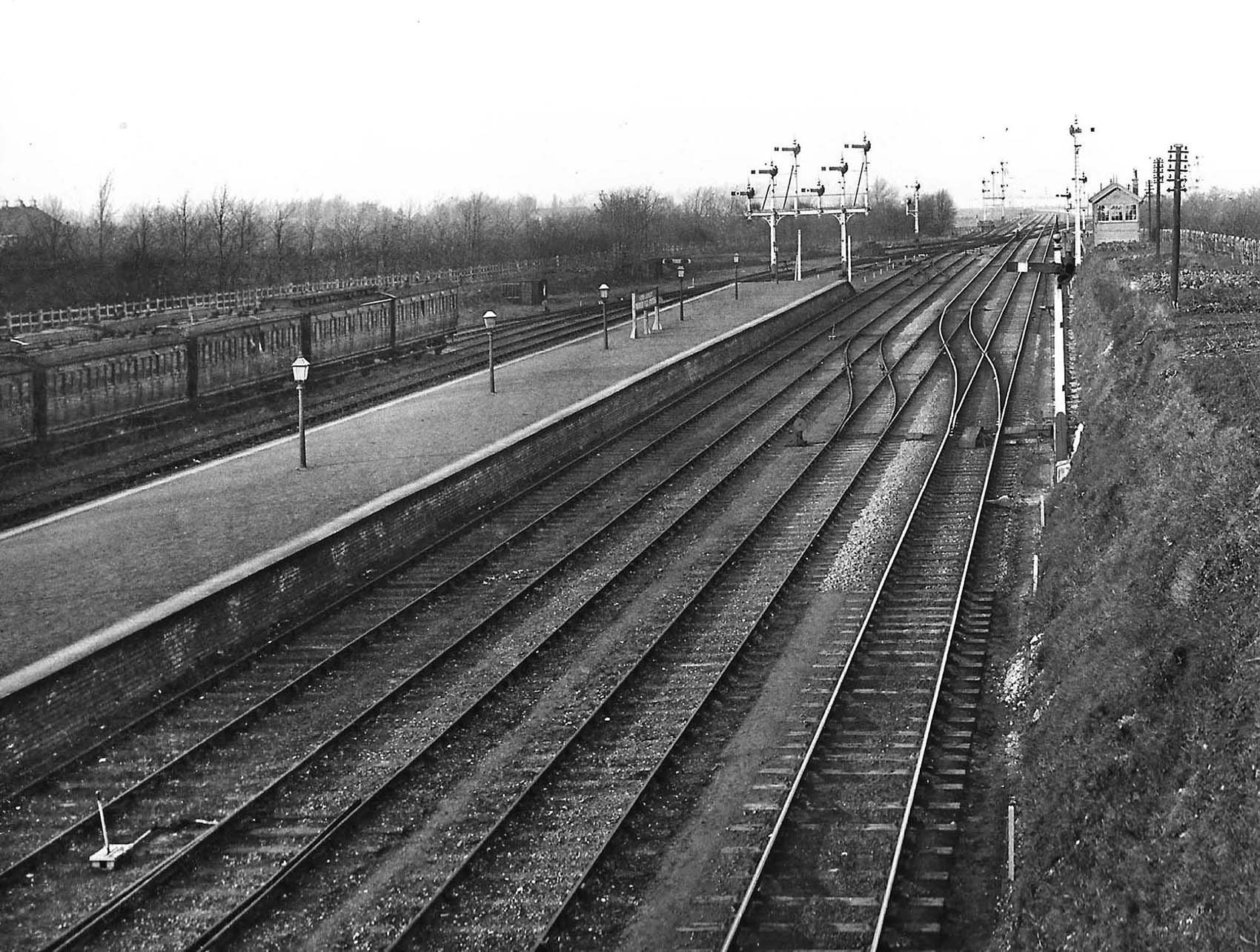
Station Name: NEWMARKET WARREN HILL

With the camera positioned on Bury Road and above the portal of Warren Hill Tunnel, usually referred to as Newmarket Tunnel, we have an interesting view across part of Warren Hill station's platform and the somewhat complex track and signalling layout. The date is unknown but we do know it is after 1900 and no later than very early LNER days. The tunnel was built for single track, the running line being that on the right with the polished rail heads, with the points adjacent to the signal on the right being the recommencement of double track. All other tracks heading towards the camera terminated at buffers behind and left of the camera. The station was not accessible by trains from the Cambridge direction without a series of awkward shunts and reversals, race goers from London and Cambridge alighting at either of Newmarket's main stations, according to period, thereafter proceeding to the racecourses by road. Warren Hill station thus catered for race traffic from the north and east although it was arguably the most inconveniently sighted of Newmarket's stations for the courses. On the right stands Warren Hill signal box, known variously as Warren Hill Junction or simply Warren Hill depending upon period. The box was a McKenzie & Holland 75-lever effort. Beyond the box the line to Bury can just been seen curving to the right while straight ahead and curving to the left in the distance is the Snailwell Chord, connecting with the Bury - Ely line and closed to passenger traffic in 1965. As well as freight and race specials, the chord carried some Mildenhall - Cambridge trains in later years as well as trains to and from March, Peterborough and elsewhere to and from Cambridge via Newmarket. The chord formed part of the Warren Hill - Snailwell - Chippenham Junction triangle and as such was also used, on occasion, to turn larger steam locomotives including Gresley Pacifics which had arrived from London with race specials. Both Snailwell Junction and Chippenham Junction boxes were McKenzie & Holland 15-lever efforts. Once a common sight, a vegetable garden can be seen on top of the bank on the right and no doubt tended by the signalmen during what, at the time of the photograph, would have been brief interludes between trains. A splendid array of Great Eastern signals can be seen. Two of the arms on the platform-end gantry carry circles on their arms, signifying control of sidings and / or loops. Also visible, just, are some points indicators and locally operated points, such as that in the left foreground. Some of these were unlocked from the signal box, some not. The lever left foreground operated the loco release from the platform road but the points at the far end of the loop were interlocked with the signal box and had a points indicator. The station platform was neat and tidy albeit basic and rather exposed. Its running-in board announced ‘Newmarket Warren Hill Station’ on two lines. Newmarket races are largely confined to Spring and Summer and at other times Warren Hill was used for coal traffic and for rolling stock stabling. Indeed, well after closure and into British Railways days horse boxes were a common sight berthed in the sidings - the latter presumably when there was insufficient siding capacity at Newmarket's original terminus. Berthed on the left is a train of 6-wheel passenger stock of GER origin. Positive identification is difficult but what we appear to be seeing is, starting furthest from the camera, a 5-compartment Lavatory Third, a similar vehicle but with clerestory roof, a Lavatory Composite, a 6-compartment Third. The clerestory vehicle is of a Diagram dating back to 1900, hence we know the earliest possible date of this photograph. Rolling stock of this type was non-gangwayed and those with lavatories had two such facilities; separate from each other and with each accessible only from the compartment either side. Reference to later photographs will show that this scene is unrecognisable today with just a single track, that on the right, passing through the site. The single track section extends from a point some 700 yards east of Dullingham to Chippenham Junction where it joins the Ely - Bury - Ipswich line.
Photo received from Gerald Brown  Home Page Home Page
|